Indonesian Government Using Huge, Swinging Balls To Deter Unsafe Train Travel
https://www.youtube.com/watch?v=VjkJfMrQ4bc
“I was really scared when I first heard about these balls. It sounds like it could be really dangerous. But I don’t think it will last long. They have tried everything to keep us from riding… but in the end we always win.’’
— Twenty-seven-year-old “train surfer” Mulyanto, who rides on the roof of the overcrowded train from Bogor to Jakarta every day for work, on the Indonesian government’s installation of large metal balls that hang from chains just above train-level at stations and track crossings. The balls are meant to stop the practice, which led to eleven accidental deaths last year. But, damn, it seems like those balls could kill eleven people the first day they’re up.
2012: The Year Tubesteak Broke
Labmeat! “Scientists have figured out the riddle of growing meat in a laboratory and are now just working out how they can make it profitable, it has been claimed.” It is worth clicking through to see the infographic on the process: Apparently they take a cow and turn it into Stella D’Oro Swiss Fudge cookies, which then become moustache-shaped bacon slices and are finally turned into burgers. The future is SO now.
Five Teams That Would Like To Forget Last Week Ever Happened
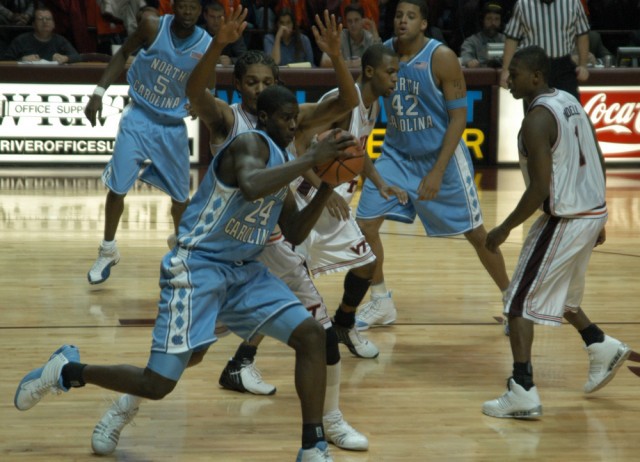
In the language of coaching, there’s rarely a distinction given between a “good” and a “bad” loss. Listen to some post-game press conferences and the line is almost always the same: a loss is a loss, whether the difference was one point or 31. But anyone who’s ever been a part of a team sport knows this is just bunk — if you’ve ever been on the receiving end of a real, honest-to-goodness beatdown, you know that it leaves a mark. Taking a licking inside the lines can make a team question whether it’s actually capable of winning. Winning is often an act of mental fortitude, and one part of a coach’s job is to convince his or her players that they — and only they — are going to be winners that day. Thirty-point trouncings make that job a lot tougher.
This past week saw five games that featured humiliating losses to conference rivals. Now those teams have to try to move past these losses — and quickly. Some will manage it; some won’t. None will forget the feeling of walking off that floor.
Starting with most recent and moving back into the week of horror.
#3 North Carolina 58 at Florida State 90
Anyone see this one coming? Probably not. That the Tar Heels might have underestimated Florida State after 42 straight days in Chapel Hill isn’t outside the realm of possibility. That UNC might have been a little flat after feasting on a month-long diet of wintery treats like Evansville, Nicholls State and an abominable Boston College team is also totally believable. That everyone’s preseason number one team would travel to Tallahassee and suffer the program’s worst loss under coach Roy Williams? No, that just wasn’t even on the radar. And yet, with ever-handy hindsight, some of the warning signs of such a performance were there.
The Heels have struggled against teams that play aggressive defense, especially on the interior. Star swingman Harrison Barnes, in particular, is a thoroughly finesse player who seems to shy from contact and fade on nearly every shot taken within the three-point line. John Henson’s long arms and frame make shot blocking easy, but physical play turns him into a jump shooter, something he’s improved on but isn’t made for.
But the problem in this game wasn’t really even the offense, as bad as it was. Rather it was UNC’s continued inability to apply enough pressure to outside shooters. The Seminoles — a 31% shooting team from deep on the season — made 12-of-27 from three-point range, eerily reminiscent of UNLV’s 13-of-32 earlier this season in a game the Rebels won in Vegas. North Carolina is the country’s top scoring team at over 85 a contest. But it ranks in the 170th range in points allowed a game, and have given up 90 twice. Unsurprisingly, UNC lost both of those games.
UNC clearly has enough talent to win a national title. But games like Saturday’s show that it takes more than immense skills to make it to a Final Four, much less win one. You have to have toughness and you have to play defense the entire game. Against FSU, at least, UNC failed miserably at both.
Oklahoma St. 65 at #4 Baylor 106
At first glance, the score may not seem all that remarkable. A bit one-sided, sure, but Baylor is undefeated and ranked in the nation’s top five and OSU is just 9–8 on the year. But as we discussed last time, there are other factors at play in Stillwater these days.
Coach Travis Ford’s team is young, and they’re missing one of their most important players in J.P. Olukemi, who is out with an ACL tear. But in Ford’s fourth season, why, with one player out, are only untested freshmen left in the lineup? Well, when you recruit seven players in a class and not a single one is still on your team two years later, as is the case with Ford’s vaunted 2009 recruiting haul, then you can see how maybe your team might be a bit thin in the experience department.
Cross that lack of depth with a road game against a confident Baylor team that suits up at least three or four likely NBA draft picks, including a conference player of the year candidate in Perry Jones III (19 points, 12 rebounds) and you have all the ingredients for a colossal stomping.
For his part, Ford kept things pretty simple after the game. In a press conference that lasted less than 30 seconds total, he told the assembled media, “They played great. We played bad. There you go. They played really, really, really well. Really, really, really well.”
Well, yeah.
Rutgers 62 at Pittsburgh 39
We recently looked at Pitt’s surprising struggles so far this season.But just when you think you have seen a team bottom out, it can really, you know, bottom out more, apparently.
If he’d been pessimistic, Pitt coach Jamie Dixon likely wouldn’t have imagined his team would begin the Big East season 0–5. And even if he’d been downright fatalistic, there’s no chance he ever would have anticipated scoring just 39 points and losing by 23 at home to Rutgers to reach that 0–5 record.
How bad was the Pitt offense? Historically bad, it turned out. The Panthers managed just 19 points at the half on an unreal 4-of-32 shooting. Pitt then came out of the tunnel for the second half and, after cutting the lead to seven, went five minutes without scoring, allowing the Scarlet Knights to more than double the lead.
It should be noted that Rutgers has shown flashes of major improvement this season, having already upset Florida and UCONN this season. But both of those games were in New Jersey, and the youthful Scarlet Knights are not expected to finish in the top half of the Big East. On cue, Rutgers’ next game was a 24-point loss at West Virginia. One thing does appear more certain, however. Rutgers will probably finish ahead of the Pitt Panthers in the Big East.
William & Mary 66 at Towson 49
Why would a game between a pair of teams whose combined record is 4–30 be on this list? It’s because one of these teams has all four of those wins, and because the other, Towson, hasn’t won a game in its last 36 tries. This loss , Towson’s 17th of this season combined with the final 19 of last season, set the NCAA Division I record for consecutive losses at 36.
And it doesn’t look like there is any mercy in sight. The Tigers play in one of the nation’s top mid-major conferences, the Colonial Athletic Association. Still, new head coach Pat Skerry is confident that he can build a winner here. Maybe. Getting at least one victory would certainly help. Working in Skerry’s favor at least is that the bar is now set very low.
#15 Louisville 59 at Providence 90
Louisville coach Rick Pitino doesn’t seem to be having very much fun these days. His team has been hobbled by injuries and the players that have been healthy don’t seem to be performing to their demanding coach’s high expectations, dropping games against Georgetown and archrival Kentucky and then a double-overtime home game to Notre Dame. Louisville then traveled to Providence last Tuesday and got absolutely plastered by 31 points. Now an aggrieved Pitino is in crisis mode.
When a recent story in the hometown Louisville Courier-Journal implied that it was Pitino’s aggressive practices that are wearing down his squad, Pitino responded as only a coach can, by blasting the offending reporter in public and accusing him of “hurting recruiting.” And losing by 31 to Providence only helps recruiting, right?
Whatever the reason, Louisville’s just not very good right now. Providence does have a new coach in Ed Cooley and the Friars have played fairly inspired basketball at different points this season, as if freed from the expectations of accomplishing much of anything. But Providence looked not just inspired, but impossibly good against Louisville during this game, which, as it happened, featured a halftime ceremony honoring Providence’s 1987 Final Four edition, not coincidentally coached by one Rick Pitino. Providence sophomore Bryce Cotton channeled that three-point bombing bunch, going 5-of-5 on three-pointers on his way to 27 points.
Pitino was supposed to be a part of the half-time celebration but didn’t appear to be a mood to celebrate. His current team trailing 43–25 at the break, Pitino went into the locker room and didn’t return until the second half. His team then opened the second half with two missed threes, a turnover and a foul.
It may be some time before Pitino starts enjoying himself on the sideline again. Louisville is just 2–3 in the Big East and still has a killer conference slate ahead, including two games against No. 1 Syracuse. Watch out, local beat reporters!
Originally from Kentucky, Joshua Lars Weill now writes from Washington, DC. His take on things can be found at Agonica and on Twitter.
Photo by Michelle Donahue Hillison, via Shutterstock.
Harry Crews Is On Your Horizon
Are we going to get some new things to read from dynamite author Harry Crews? Signs point to yes! [Via]
Your Touchscreen Is Trying To Kill You
Oh, sure, that iPad looks all innocent and friendly, but it is secretly plotting your demise in its beady little brain.
Freddie Gibbs And Madlib, "Thuggin'"
https://www.youtube.com/watch?v=vbxcPy1qJTU
You know the part in Robocop when the drug deal gets intense and the thugs pull out rifles and pistols and Kurtwood Smith sort of laughingly says, “Guns! Guns! Guns!” That’s how I feel sometimes watching rap videos, because the weaponry worship can get so ridiculous. (I should admit that my reaction to seeing a real gun in real life is always much less cavalier.) The new video from Freddie Gibbs and producer Madlib is a case in point. But it’s also a good video. And Madlib’s beat tingles like some kind sad angels’ harp strings, and, man, Gibbs can really rap.
The Architect, The "It" Girl And The Toy Pistol That Wasn't
The Architect, The “It” Girl And The Toy Pistol That Wasn’t
by Evan Hughes
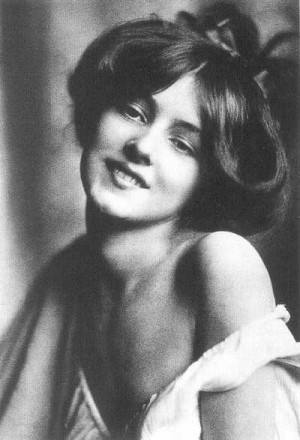
One warm June night in 1906, Albert Payson Terhune could be found engaged in battle for a telephone booth in the old Madison Square Garden while wearing a tuxedo. He had forcibly removed a man mid-conversation, and now, as he shouted into the phone, he kicked out a leg and swung his free arm to fend off the displaced caller and another man wielding a chair. Moments before and one floor above, Terhune, filling in as a drama critic for the New York Evening World, had been a witness to the crime of the century, and he was calling in the scoop.
The movie version of his half of the conversation would go something like this: “Right, yes, that Stanford White. It’s about Evelyn Nesbit!”
Stanford White, a driven and charismatic man, was a founding partner of McKim, Mead and White, a firm responsible for an absurdly large portion of New York’s grandest architecture. Their legacy includes Columbia University’s main campus, the James Farley Post Office, the Brooklyn Museum, the Morgan Library, all still standing, and most famously the original Penn Station (whose demolition in 1963 is mourned by everyone in the world except two people).
Evelyn Nesbit had arrived in New York as a teenager with her debt-laden mother and acquired some notice as a model and a chorus girl. A familiar path, but in her case both the initial innocence and the heat of the spotlight were particularly pronounced. As she moved from artist’s studio to men’s-club stage and postcards of her face cropped up around the city, she relied heavily on her mother to supervise her career and social life. Her mother appears to have been clueless about both.
According to Paula Uruburu’s overheated but dishy and informative American Eve, Nesbit’s fusion of naïveté and sex appeal made her “the ur-Lolita. The very first ‘It’ girl, before anyone knew what ‘It’ was.” In photographs she looks like a cross between a younger Madeleine Stowe and Olivia Hussey, co-star of the Franco Zeffirelli film of Romeo and Juliet. These are not the kind of century-old photos that make you puzzle over changing standards of beauty.
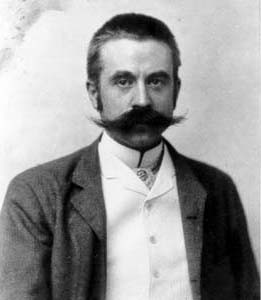
In White’s circles, which included Rockefellers, Morgans, Henry James and Edith Wharton, only some knew that the married White was a philanderer with a weakness for young ladies. In 1901 he arranged to meet Nesbit after seeing her perform. At first the architect, 46 to Nesbit’s 16, treated her as only a “protégée,” showing her which one was the salad fork, as it were, and having her discolored tooth fixed as if she were a flawed doll. His status and generosity kept her mother happy despite the warning signs.
One evening “Stanny” gave Evelyn a thorough tour of his married man’s bachelor pad, occupying several floors in a row house on sketchy West 24th Street, in “the Tenderloin.” One room had mirrors on every wall. Another had a four-poster bed with mirrors in the headboard and the canopy, and yet another room held the red velvet swing that later became infamous. (On the ground floor was the FAO Schwarz toy store, which fact would not be credible in fiction.)
White poured her an unusual quantity of champagne that night, which she later said tasted funny, and the lurid story ends with her waking up sore and mostly undressed, with a naked White next to her. Details of her account varied between her two memoirs, but the gist was the gist, terrible no matter what.
Traumatized but feeling confused and powerless, Nesbit would remain White’s lover for months. On her visits to the row house, White delighted in giving her a push as she rode the velvet swing in a state of undress. She would later offer the reminder, in explanation, that she was 16 and liked riding swings.
When Nesbit caught on to White’s roving eye with other young things, she too moved on, with the gaze of the penny press upon her. First she became involved with John Barrymore, then a 21-year-old illustrator, and the two had the kind of mutual infatuation befitting their age, promenading through Central Park and seeking each other out day after day. White and Evelyn’s mother interfered, however, and the relationship came to an end. Soon she met Harry K. Thaw, an impulsive, juvenile man in his thirties who felt the need to prove himself to “society” though he was the heir to a $40 million coal and railroad fortune.
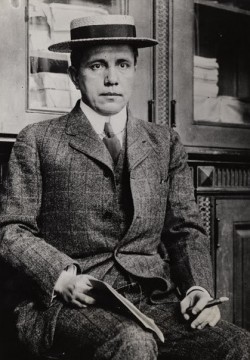
In the era of Comstock’s New York Society for the Suppression of Vice, Thaw posed himself as a crusader for moral purity. Owing to rumors about White’s private life, Thaw had it in for him even before knowing the details involving Nesbit.
Meanwhile, in private, Thaw cultivated a habit of whipping young boys and women. When Nesbit reluctantly told him about her past with Stanford White, he beat her with a leather riding crop in return for her honesty. Thaw became more and more controlling and obsessed, even deranged, over her relationship with White, pressing her for every detail.
White reasserted himself when he heard of Thaw’s behavior, and a clash of big-money foes ensued. Each gathered potentially ruinous evidence about the other, paying detectives and informants to get it, while Nesbit ducked beneath the crossfire. Finally, following a relentless campaign of proposals, she agreed to marry Thaw, and White had to stand down. Thaw was protective of Nesbit, to the point of hired surveillance, and made her promise to tell him if she ever came across White.
That June evening in 1906, Thaw escorted his wife to Madison Square Garden for a fancy premiere attended by some 900 people. She was unpleasantly taken aback by the surprise destination for this date. As Thaw of course knew, White had personally designed the Garden and kept an elegant studio apartment in the building, up in the magnificent tower topped by a statue of the goddess Diana. Evelyn nervously scanned the crowd for her former lover.
Built in 1891, this version of the Garden, to its credit, bore no resemblance to the current one — it wasn’t even located in the same place — and it was probably White’s highest achievement. The arena overlooked Madison Square Park, and one feature of its elegance was that on its roof was a huge outdoor restaurant, complete with the stage that hosted that night’s performance of Mamzelle Champagne. The black-tie audience dined beneath the stars, surrounded by huge potted plants and lanterns and elaborate decorations.
White was nowhere to be found for the opening of the musical, to Nesbit’s relief, but suddenly he strode in toward the end, at nearly 11 p.m., acknowledging those in the crowd who recognized him, and sat by himself in the fifth row. Thaw did not see White at first but seemed agitated, and when he stood up, Nesbit suggested in a strained voice that they leave. He agreed, but as they entered the elevator Thaw slipped out and disappeared.
The crowd near White saw a man walk right up to him and raise what appeared to be a toy pistol. Then, in the parlance of the day, dude shot him in the face. Thaw fired three times with a very real gun. White was clearly beyond saving. But many who had a poor view thought it was a stunt, all part of the show, and yelled to the performers that they ought to continue. Some of them carried on pathetically with the music and dance, clearly confused, while a few chorus girls, not confused, fainted to the floor.
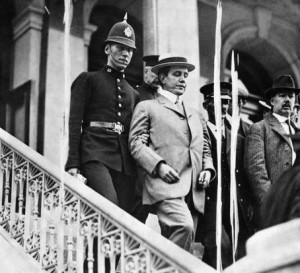
Witnesses heard Thaw say, “I shot him because he ruined my wife.” (The last word might have been “life,” but “wife” lends itself better to the appropriate level of melodrama.) While Nesbit cried out nearby, Thaw calmly surrendered to a policeman, who declined to cuff him since he was obviously a gentleman.
The high society murder, with whispers of a lurid backstory, drove the press and the public into a true frenzy, with every shred of speculation and embellishment deemed worthy of a report. Thomas Edison’s studio turned out a film version of the Rooftop Murder only a week after the crime, Uruburu writes, and it hit number one at the box office. The trial, when it finally arrived, was the first in American history in which the jury had to be sequestered, and some 600 potential jurors were interviewed to settle on 12 uncorrupted souls.
The only strategy for Thaw was to plead insanity, but the Thaw family wanted to stress that it was a “temporary brainstorm” rather than a possibly hereditary madness. The prosecution — and again, this is not a novel — described a new condition, “Dementia Americana,” that could cause an American male to be driven to kill by the violation of the sacredness of his wife. Thaw himself wanted to cry out that he was perfectly sane and simply avenging an angel’s “ruination” at the hands of a demon.
Nesbit, who now had only the Thaws to support her and had a notoriety that left no prospect of a next marriage, took the stand and told the world, in a steady voice, the story of Stanford White and Harry Thaw. President Roosevelt sought to suppress the transcript of the trial, for fear of further damage to American morality and productivity. No luck. The papers seized on the mirrored bedroom, the red velvet swing and the depravity of two wealthy men.
The result was a hung jury, followed by another circus of a trial that resulted in a verdict of insanity. Thaw’s incarceration at a home for the clinically insane in Fishkill, New York, was as cushy as wealth could afford, Uruburu writes. Nesbit stood by him and visited him regularly, but she despaired of his bizarre and unremorseful behavior, and eventually departed for Europe.
The tabloids followed her everywhere. Her life became a tawdry parade of exploitation and scandal and even attempts at suicide, but it lasted all the way to 1967. She never turned against the great architect completely, refusing to demonize him and speaking of his “only vice.” But the world certainly turned against her. In her last memoir she wrote, “The tragedy wasn’t that Stanford White died, but that I lived.”
Previously: Larry David’s Rough Night Out With The Aging Literary Lion and The Cordial Enmity Of Joan Didion And Pauline Kael
Evan Hughes’ book, Literary Brooklyn, a work of literary biography and urban history, has just been published. He’s on twitter.
Jimmy Castor, 1947-2012
https://www.youtube.com/watch?v=JNS42Na2mpc
New York singer, saxophonist and band leader Jimmy Castor died yesterday of as-yet-unknown causes. The very funky Castor took Frankie Lymon’s place in the doo-wop group The Teenagers in 1957 (when he was not yet a teenager). And he went on to solo success with “Hey, Leroy, Your Mama’s Callin’ You,” which has been sampled a lot, notably on the Beastie Boys’ “Hold It Now, Hit It,” and which also seems, pretty clearly, to have been source material for Paul Simon’s “Me and Julio Down By the Schoolyard.” Castor had his biggest success in the early ’70s, with his group The Jimmy Castor Bunch. Samples of the above “Troglodyte (Caveman)” and the title track from the 1972 album It’s Only Just Begun have been used in too many rap songs to count.
"I have more stuff than I could ever possible use or need."
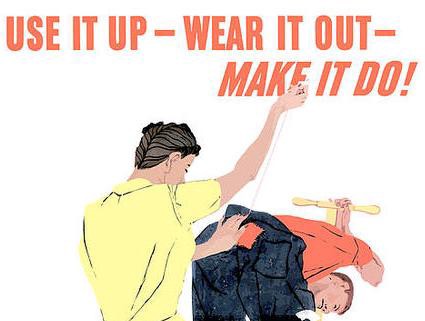
I’ve been thinking about the way I buy things, the when and where and why of it all, and how totally dumb most of the purchases (big and small, from gum to Apple products) that I make are. So I’m very into Make It Do, which is about a year of wearing things out, mending things, and buying minimally. (But what about pedicures? That’s not in the FAQ!) It’s nice that it’s not a crusade (“my year without any animal products”!) or a stunt (“my year as a cavewoman”!); it’s just a way to pull-back, look at the way we interact with products and see what one learns.
Dead Lady Doing Church Gigs
“Is this image Princess Diana’s ghost or an optical illusion?” I DON’T KNOW, I’M SO CONFLICTED.
